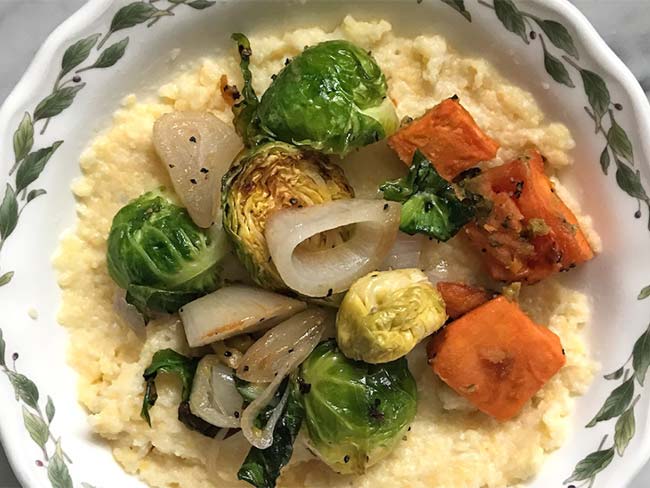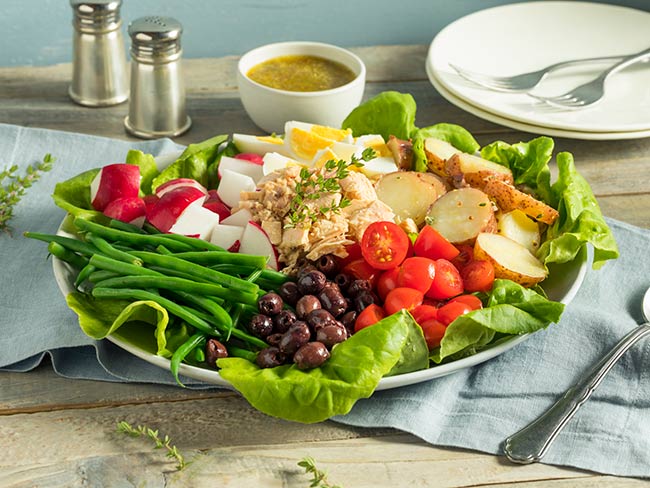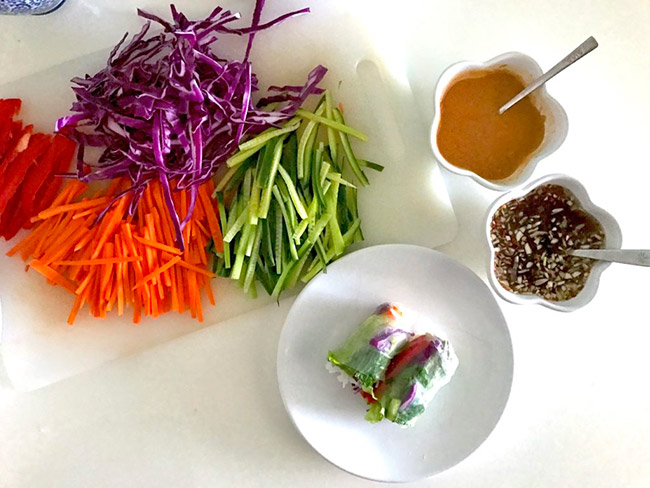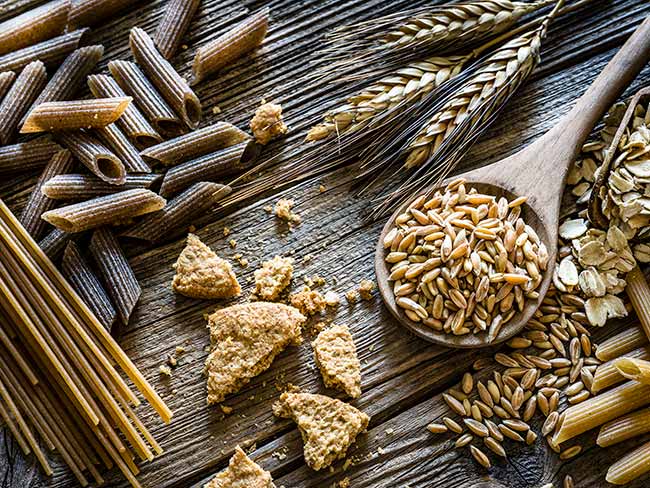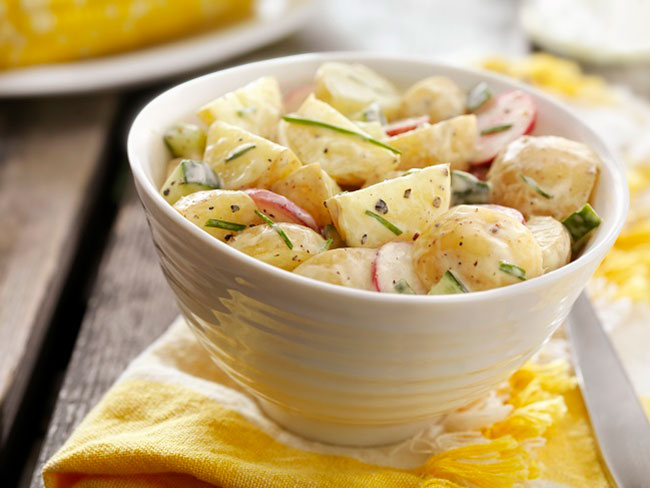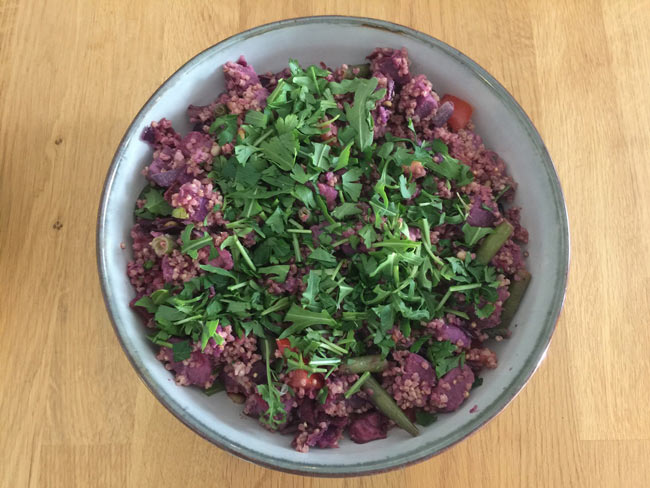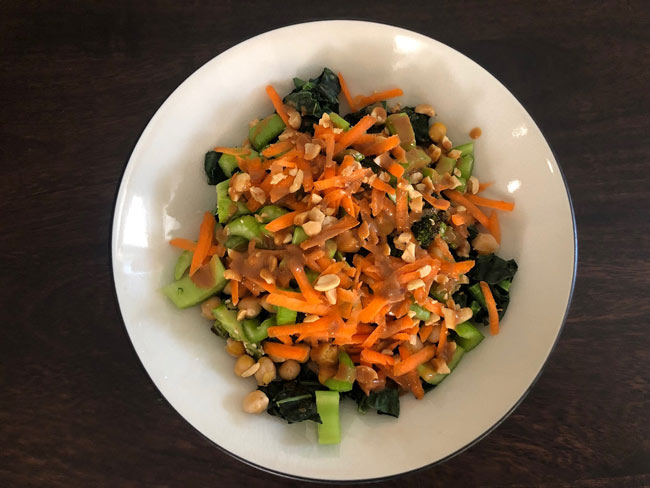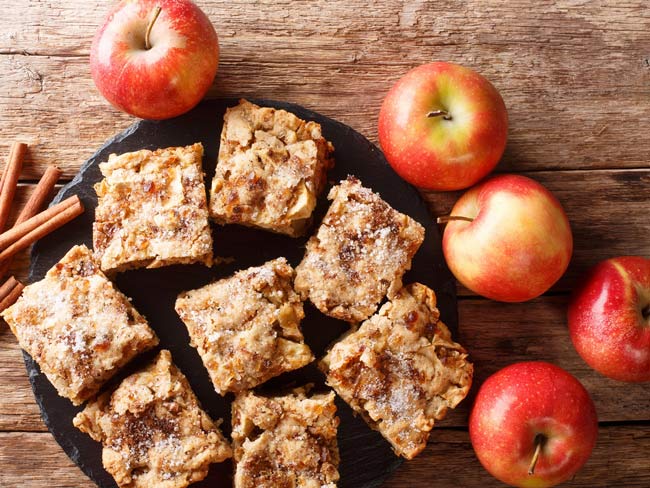Meal prepping for grain bowls and more
These tips for eating well while sheltering in place make it easier to cook once and eat a variety of healthy meals all week.
While the impulse might be to eat comfort foods like mac and cheese in the time of the COVID-19 pandemic, your body still needs these nutritious foods to stay healthy and strong: whole grains, a variety of vegetables, and lean protein. To make healthy meals that are easy and delicious, it’s a great idea to keep your fridge and pantry stocked with foods that you can transform into a variety of meals.
For many people, working from home doesn’t leave you with much free time, especially if you’re simultaneously home-schooling your kids.
The answer? Grain bowls!
This strategy for batch cooking uses mainly pantry ingredients, which allows you to mix and match throughout the week and have enough variety of flavors to please the whole family. And this strategy works whether you’re sheltering in place or have a busy week and want to be able to throw something together quickly.
This is useful for all of us who are now shopping infrequently and cooking from our pantries. So wash your hands, practice social distancing (but stay connected virtually), rest, exercise, meditate — and eat well!
Prepping for your grain bowls
The most flexible way to compose a grain bowl is to use my Grain Bowl Template®:
grain + sauce + roasted vegetables + protein + nuts/seeds + leafy greens + something creamy.
To make this as easy as 1-2-3 (OK, actually 1 to 7), batch cook the different components once per week. Use an efficiency tip from the professional kitchen and start steps 1 and 2 first, then work on the remaining steps while those are cooking.
And don’t forget your mise en place: Get all of your ingredients ready so that you don’t realize at the last minute that something needed to be prepared in advance, such as soaking cashews or beans.
- Cook 3 batches of whole grains. Some of my favorites include brown rice blends, farro, and quinoa. Make these in the amount that’s right for the size of your household, either on the stove or in a rice cooker, if you’ve got one. (Or make more; cooked and cooled whole grains freeze well.) Whole grains have fiber, B vitamins, iron, and other minerals that refined grains such as white rice lack.
- Make a sheet pan or 2 of roasted vegetables. This can be done at the same time you’re prepping your grains. Root vegetables, which keep for a long time, are particularly good for this. Some ideas: sweet potatoes, parsnips, carrots, turnips, wedges of red onion. Cut into equal-sized chunks (about 2 inches) so they cook evenly, toss with olive oil, salt and pepper, and perhaps a favorite spice, and cook in a hot oven (400 to 425 F) and you’ll be all set in about 20 minutes.
- Prepare your proteins. Most plant-based proteins are pantry staples — think beans, either dried, canned (look for no/low-sodium in cartons or cans labelled BPA-free), or frozen; tempeh, tofu, and seitan. Cooking a pot of beans once a week will allow you to use them not only in grain bowls, but as a base for chili, soup, and more. You can also marinate and then pan-fry or bake tempeh or tofu in advance for added flavor and texture. Other healthy, non-plant-based proteins that work well in grain bowls include roasted salmon and grilled or baked chicken.
- Nuts and seeds. These little powerhouses of crunch and nutrition (with minerals including immune-boosting zinc and healthy fats) don’t really need to be prepared. However, toasting in a pan over medium heat or in a 350 F oven for 5 to 10 minutes will bring out their crunch and flavor. It’s worth the extra step!
- Leafy greens. Whether you eat them raw or cooked, leafy greens are a great way to add fiber, B vitamins, iron, and many minerals including potassium and calcium. Microgreens or baby greens are prewashed and require no extra prep. You can also stir-fry or braise heartier greens like kale or collards if you prefer your greens cooked.
- Something creamy. This can be cashew cream, sliced avocado, a tahini- or peanut-based dressing, or cheese if you eat dairy. We need some fat in our diets to absorb vitamins A, D, E, and K. A little dollop, stirred in when you eat, brings it all together.
- Get saucy. Never forget flavor! This is where the sauces come in. Make one or more of these sauces once a week and keep in the fridge, and just like that, you have the finishing touch on your grain bowl.
- Bonus: Eat the rainbow. Add whatever fresh vegetables you have for color and flavor. Did you know that different colors correspond to different nutrients? Keep it colorful and cover your bases! Great additions include julienned or grated carrots, or sliced cherry or grape tomatoes, or you can add a touch of sweetness with whatever fruit is in season. Pickled red onions keep indefinitely in the refrigerator and add a nice pop of color and tanginess to perk up your grain bowl.
Pick a global theme to keep it interesting
Here are some starting points to inspire you, but the sky’s the limit. Add the other ingredients from the template to customize your bowl.
- Mediterranean I: farro (or bulgur), chickpeas, tahini dressing
- Mediterranean II: quinoa, white beans, pesto
- Asian: brown rice, edamame, soy-sesame vinaigrette
- Thai: mixed brown rice, grilled or pan-fried tofu, peanut sauce
Beyond the grain bowl
To mix it up throughout the week, use your prepped ingredients to create other dishes. Use one of these ideas, or come up with your own.
- Hearty salad: Make with massaged kale or baby greens, dress with vinaigrette or any of your other prepared sauces (thin with water or lemon juice if needed), and top with roasted vegetables, toasted seeds, and whatever proteins or fresh vegetables you like.
- Stuffed potato: Start with a whole sweet potato, bake or microwave it until tender, split the top, fill it with any of your prepared ingredients, and top it with cashew cream or tahini dressing.
- Pesto pasta: Add cherry tomatoes, and cannellini beans to make a quick pasta meal.
- Asian noodle salad: Use the peanut sauce or soy-sesame vinaigrette to dress whatever Asian noodles you have, including instant ramen, and add in veggies.
- Vietnamese fresh spring rolls: Use rice paper wrappers, rice vermicelli if you have it, and whatever leftover meal prep ingredients you have, add in some fresh mint, and serve with peanut sauce.
- Dumplings or potstickers: Chop up leftover greens with edamame or tofu, wrap in dumpling wrappers, and serve with soy-sesame vinaigrette.
- Porridge: Move over, oatmeal! Other whole grains also make excellent porridge, and by using precooked grains, you’re halfway there. Add water and/or milk, simmer and stir until you have a creamy bowl of hot cereal. Top with seeds, nuts, and some berries for a delicious breakfast.
Meal prep grocery list
These quantities are meant for a family of 4 for 1 week. If your household is smaller, stick to these amounts to minimize trips to the grocery store, and you’ll be able to stretch this for more than a week. I’ve also included pantry basics to keep stocked.
- 1 pound dried lentils or other bean/legume, or 3 to 4 cans low-sodium or no-salt-added beans
- 1 to 2 blocks of firm tofu and/or tempeh. If you eat meat or fish, 2 to 3 pounds of a large piece, such as a whole chicken or salmon fillet.
- 1 pound whole grains, such as brown rice, farro, bulgur, quinoa, barley
- 3 to 4 bunches leafy greens, such as kale, Swiss chard, collards, and/or mature spinach. These can take up a lot of fridge space, so prep and blanch them to save space and have greens ready to eat all week. You can also freeze them after blanching.
- 5 to 10 ounces baby greens such as arugula, baby spinach, or baby kale
- 1 container of cherry or grape tomatoes
- Fresh herbs: basil, Italian parsley, cilantro, and mint are some of my favorites (store properly to avoid waste)
- Sweet potatoes or other root vegetables
- Garlic, shallots, red onions (to roast and/or pickle), ginger
- Olive oil, grapeseed or canola oil, sesame oil, vinegar, limes or lemons (even better, from your own or a friend or neighbor’s tree!)
- Flavor basics: salt, pepper, low-sodium soy sauce or tamari, miso, chili sauce
- Spices: chili flakes, cumin, smoked paprika, cayenne, garlic powder, any of your favorites
- Sweeteners: sugar, honey, maple syrup
- Healthy fats: tamari, peanut or other nut butter, raw cashews, walnuts, almonds, pepitas, sesame seeds
- Whole-grain pasta, other dried noodles
- Whole-grain tortillas
- 1 loaf of crusty whole-grain bread (Slice and freeze if you can’t finish it in a few days; slices can be toasted or grilled directly from the freezer.)
